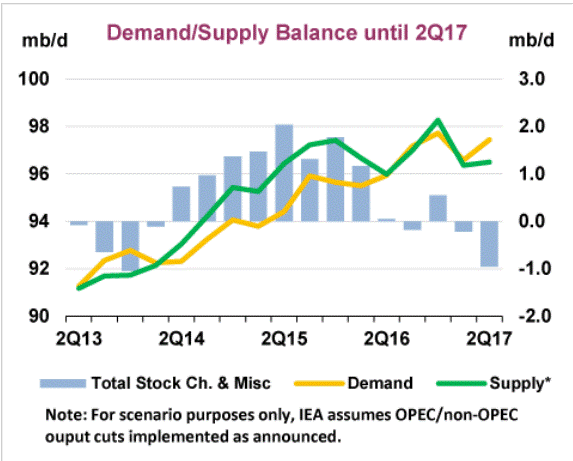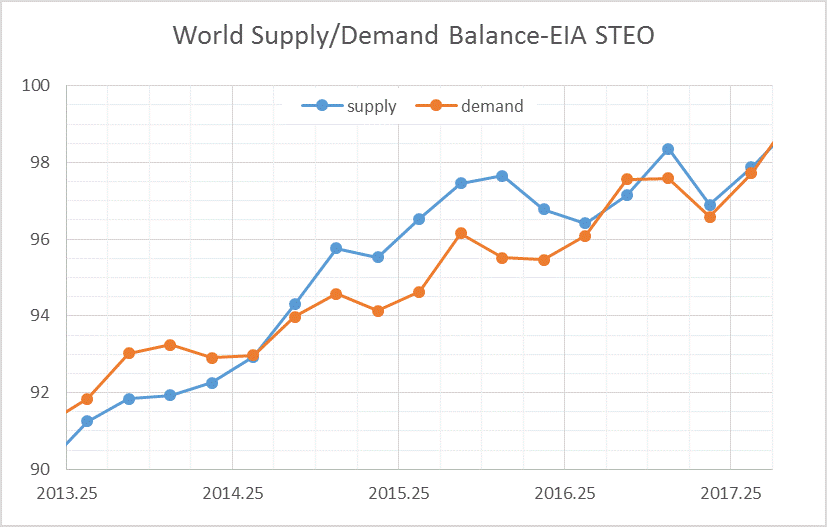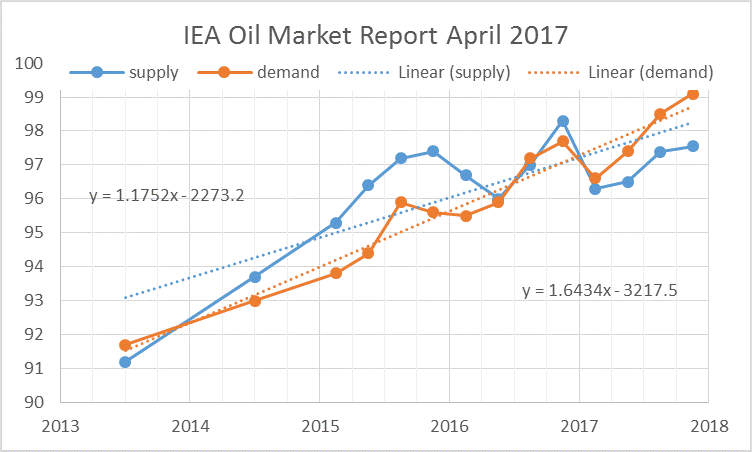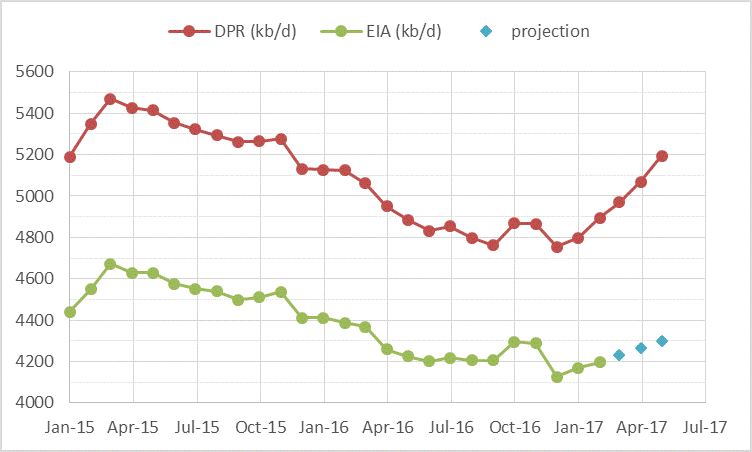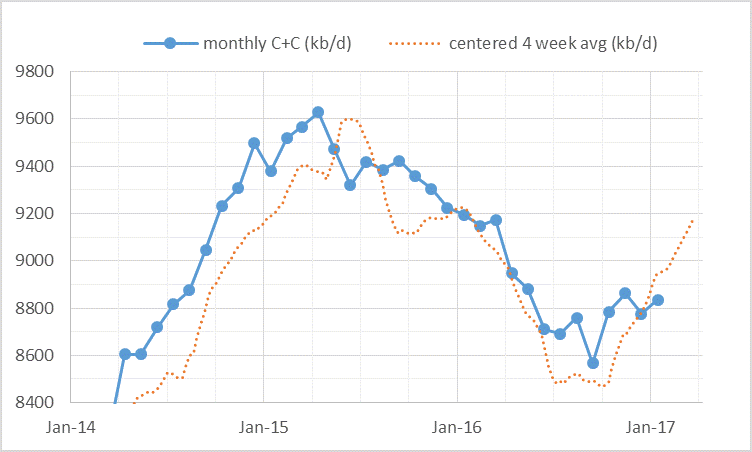All data below is based on the latest OPEC Monthly Oil Market Report.
All data is through April 2017 and is in thousand barrels per day.
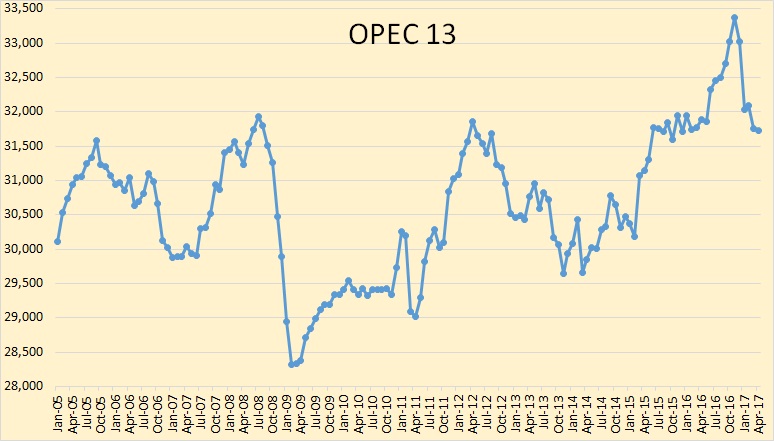
Looking at the above chart it seems obvious what most OPEC nations were doing. They announced in the summer of 2016 that there would likely be quota cuts beginning in 2017. And those cuts would be a percentage of their current production. So everyone began making heroic attempts to increase production by the end of 2016. So now, after everyone who felt that they should cut, has cut, they are right back to the level that they were at before the cuts were proposed.
I wrote the above paragraph last month. I see no reason to change a word of it now.
